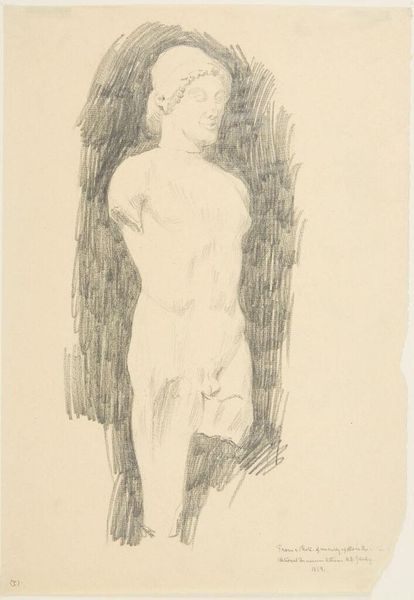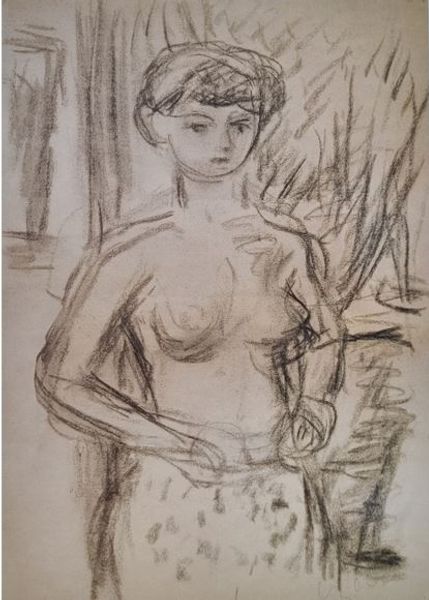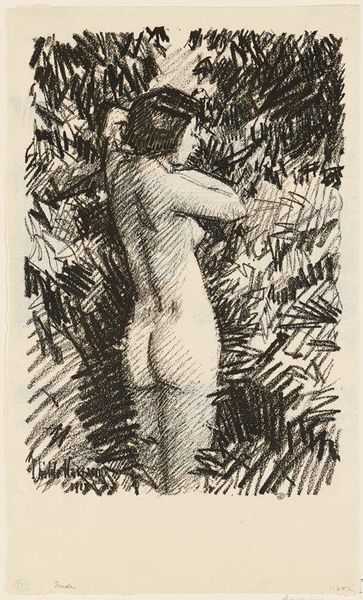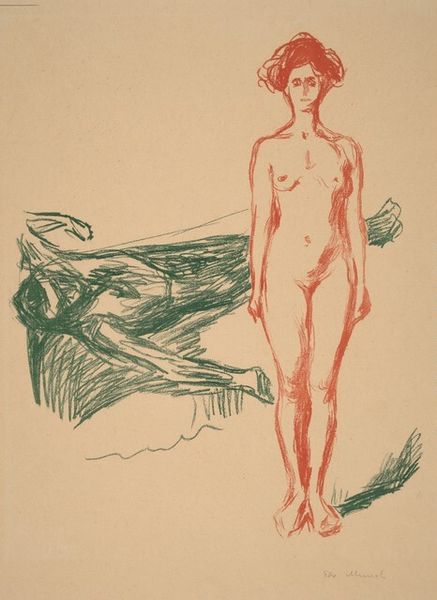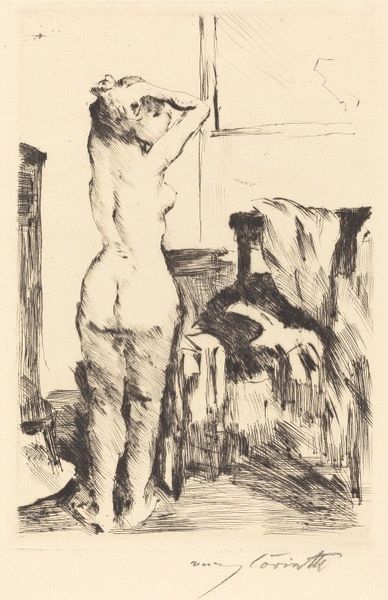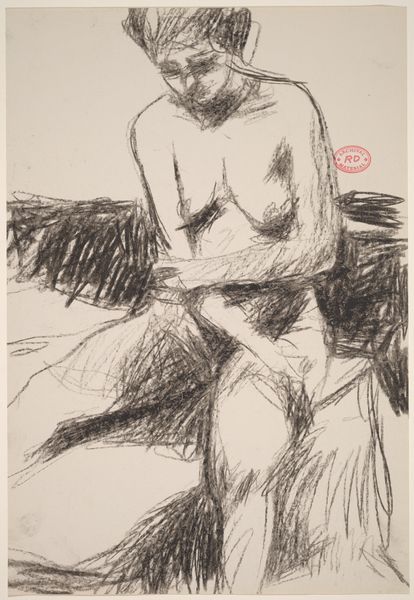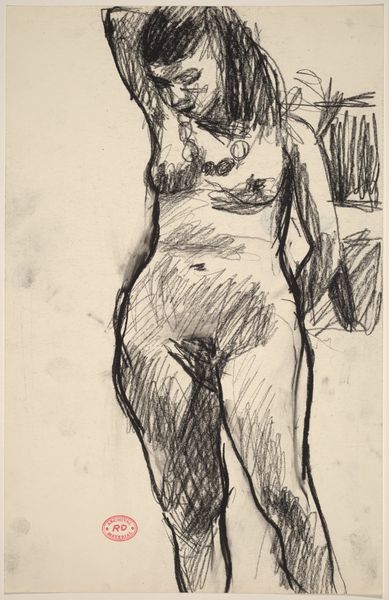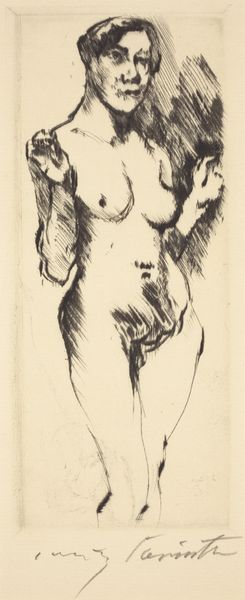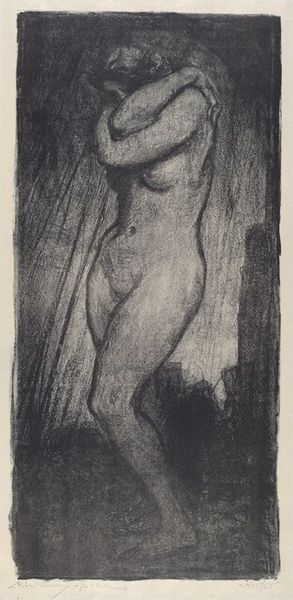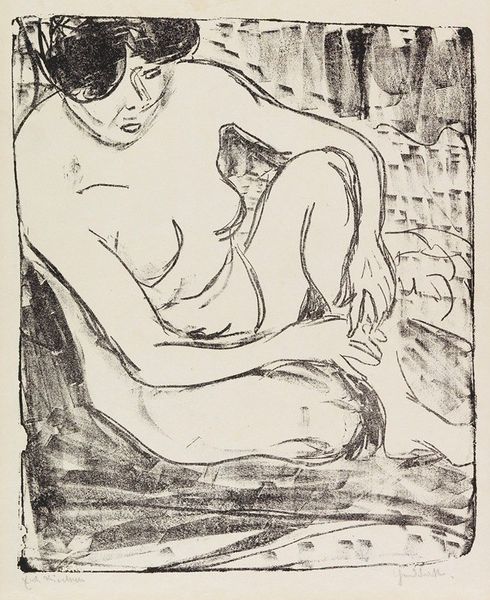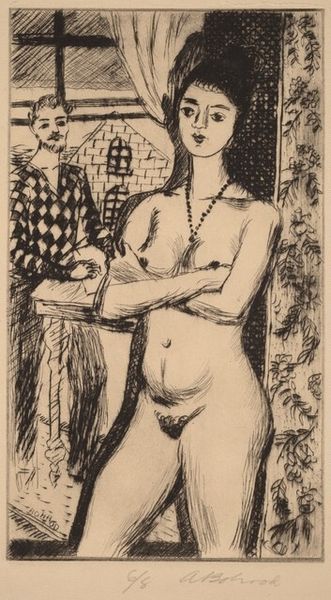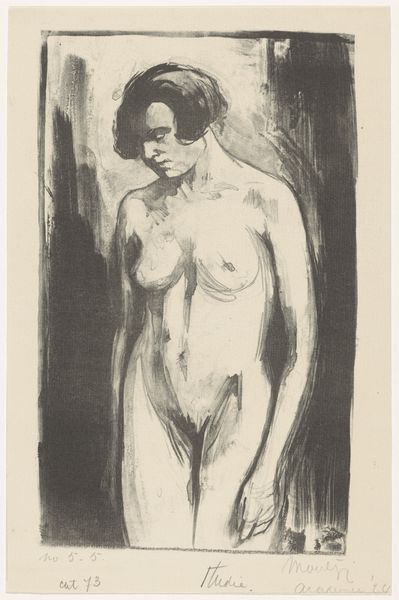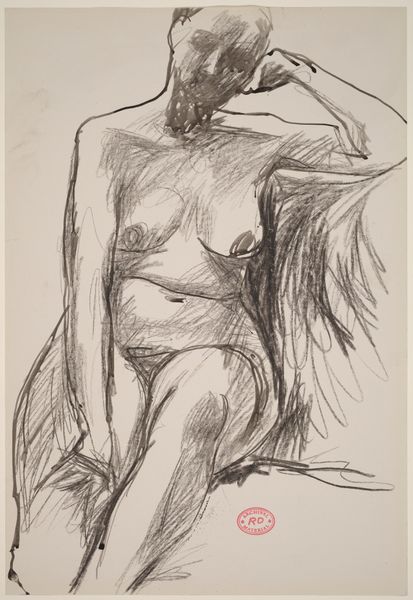
Copyright: Public Domain: Artvee
Editor: This is "Elderly Woman in Hospital," an etching in ink from 1981 by Edvard Munch. There’s something so haunting and raw about the image – the figure's vulnerability is almost palpable. What stands out to you when you look at it? Curator: What I see here is Munch confronting institutional spaces and societal views on aging and the female body. Consider the setting implied by the title, "in Hospital." Hospitals aren’t neutral; they’re sites of power, control, and often, dehumanization. The woman’s nudity, coupled with her aged appearance, challenges idealized representations of the body that dominated much of art history, particularly concerning female subjects. Editor: That's fascinating! I hadn't thought about the hospital itself playing such a central role in shaping the message of the piece. Do you think this etching was intended as a form of social commentary? Curator: I believe so. The figures in the background, slightly blurred and indistinct, could represent the institutional gaze, perhaps the nurses or other patients. Their presence, or lack thereof in clear definition, further isolates the central figure. The Expressionist style enhances the emotional weight – the harsh lines, the somber tone – it all works to create a powerful statement about the marginalization and visibility, or perhaps invisibility, of aging women within healthcare systems and wider society. It's asking us to confront uncomfortable truths. Editor: It really makes you think about the power dynamics present in these environments and how they influence our perceptions. I hadn't considered that connection at all, thank you. Curator: My pleasure. Considering the socio-political context of the time adds layers of meaning to what appears to be just a simple portrait. Hopefully, this is the beginning of a new way of considering art's meaning and message.
Comments
No comments
Be the first to comment and join the conversation on the ultimate creative platform.
